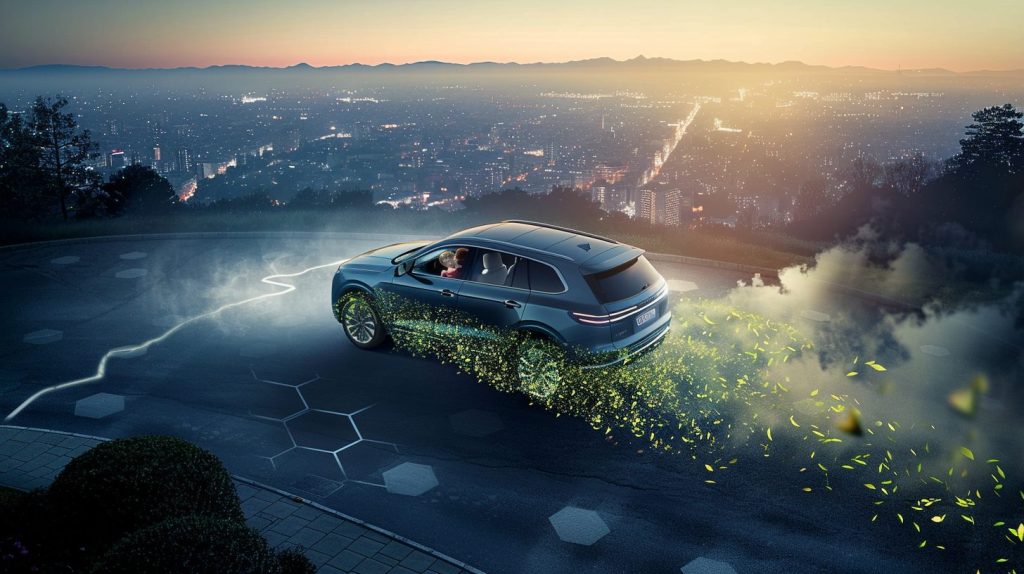
Let’s be honest: “eco-friendly car enhancements” once meant a sad pine-tree air freshener and a guilty conscience. Welcome to 2025, where optimizing a family hauler for efficiency, health, and sanity is both science-backed and design-forward. I’m Nathan. I mod cars for a living, test gear for fun, and believe your road-trip rig should be clean, calm, and clever — not crunchy.
If you’ve got kids, a dog, and a calendar full of soccer, beaches, and week-enders out of LA/Chicago/NYC, this guide is built for you.
Three buckets:
Everything below is practical, attractive, and doable in a driveway.

Why it matters: Rolling resistance eats energy. LRR compounds and construction reduce that drag — translate to real MPG range.
The numbers: A 10% drop in rolling resistance delivers roughly ~1% fuel-economy improvement in passenger vehicles, per industry studies and test programs; results vary by tire and vehicle.
How to do it right:
Why it matters: Under-inflation increases rolling resistance and wear; bad alignment scrubs tread and fuel.
The numbers: Keeping tires at spec can improve mileage by up to ~3% (and under-inflation costs roughly ~0.2–0.3% MPG per PSI).
Pro move: Set a recurring calendar reminder; buy a decent digital gauge.
Bonus: Proper alignment extends tire life, which keeps rubber out of landfills.
Why it matters: Anything on the roof punches a hole in your aerodynamics.
The numbers: Roof racks and boxes can slash highway economy by double digits; LBNL/NREL quantified a national penalty near 100 million gallons per year and up to ~25% extra consumption at speed.
Do this instead: Use cargo systems only when the trip demands it; otherwise, stash gear in-cabin or in the trunk (see #8).
Why it matters: Children breathe faster and sit closer to tailpipes. In-car PM and gases rise in traffic; better filters cut exposure.
The numbers: Controlled trials show upgraded cabin filtration can reduce in-vehicle particulate exposure by about one-third versus placebo; activated-carbon media also reduces NO₂ and hydrocarbons. Combine with recirculation for large PM cuts (with occasional fresh-air cycles to manage CO₂).
What to buy: A high-efficiency cabin filter with activated carbon from a known brand; change it on schedule.
Mistake to avoid: Running “recirc” forever. Periodically switch to fresh air to avoid drowsiness from CO₂ buildup (that’s a real thing). TIME
Why it matters: Your right foot is the biggest mod.
The numbers: Aggressive driving can cut fuel economy by roughly 15–30% at highway speeds (and up to 40% in stop-and-go). Training and gentle driving save money and emissions.
How to implement:
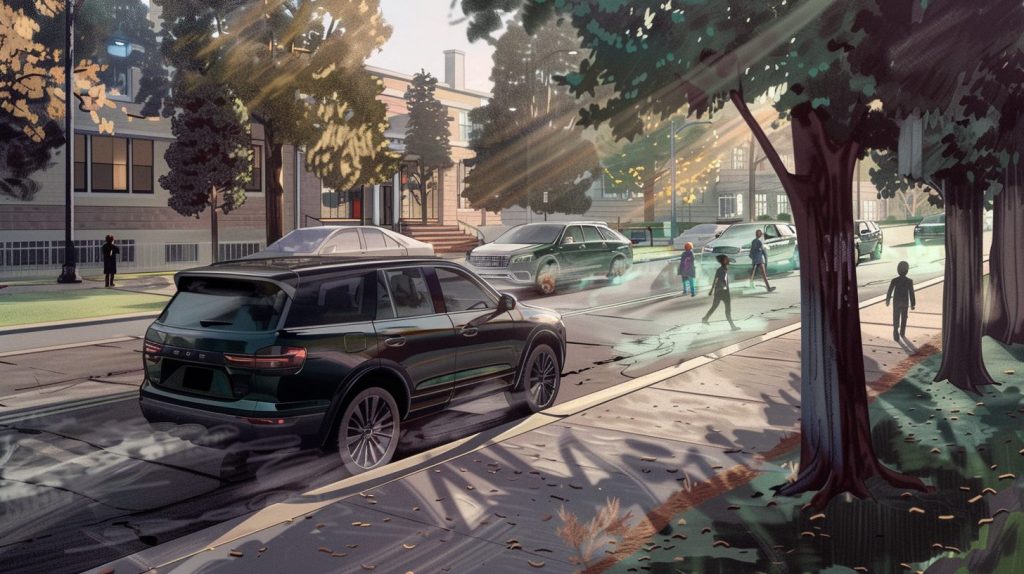
Why it matters: Idling burns fuel and concentrates pollution where children stand and play.
The numbers: Argonne’s stop/start analysis: if you’re idling longer than ~10 seconds, shutting off and restarting uses less fuel and emits less. NYC caps idling at three minutes citywide and one minute near schools.
Local angle: California and Illinois restrict extended idling for heavier/commercial vehicles; Chicago policy limits municipal-fleet idling to three minutes. Even where passenger-car rules are looser, the science is the same — off is better.
Why it matters: DIY driveway washes send phosphates, surfactants, and grime straight to storm drains.
What to do instead: Prefer commercial washes that reclaim/filter water and manage runoff; if washing at home, use phosphate-free soaps and pervious surfaces.
Why it matters: Weight distribution, loose objects, and packing shape efficiency and safety. Debris and loose loads also cause real crashes on U.S. roads.
The numbers: AAA Foundation attributes 200,000+ crashes in four years to road debris from unsecured loads or parts. Inside the car, unrestrained cargo becomes projectiles in a crash; organizers and anchor points matter. AAA Foundation for Traffic Safety
Real-world pick for families:
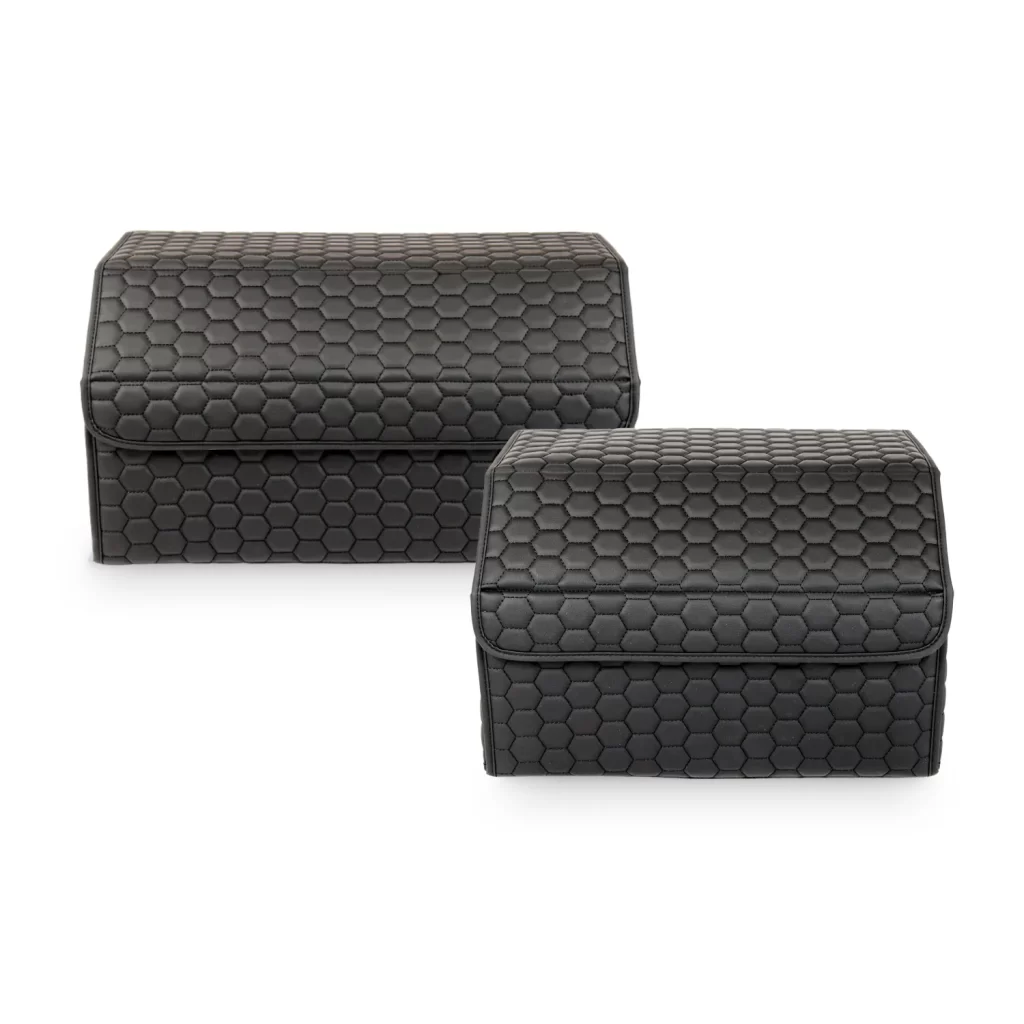
Owleys Black Hexy Trunk Organizer Set — rigid panels, premium eco-leather, and modular dividers keep sports gear, beach kit, groceries, and dog supplies locked down instead of ping-ponging between braking zones. Looks like it belongs in a Range Rover.
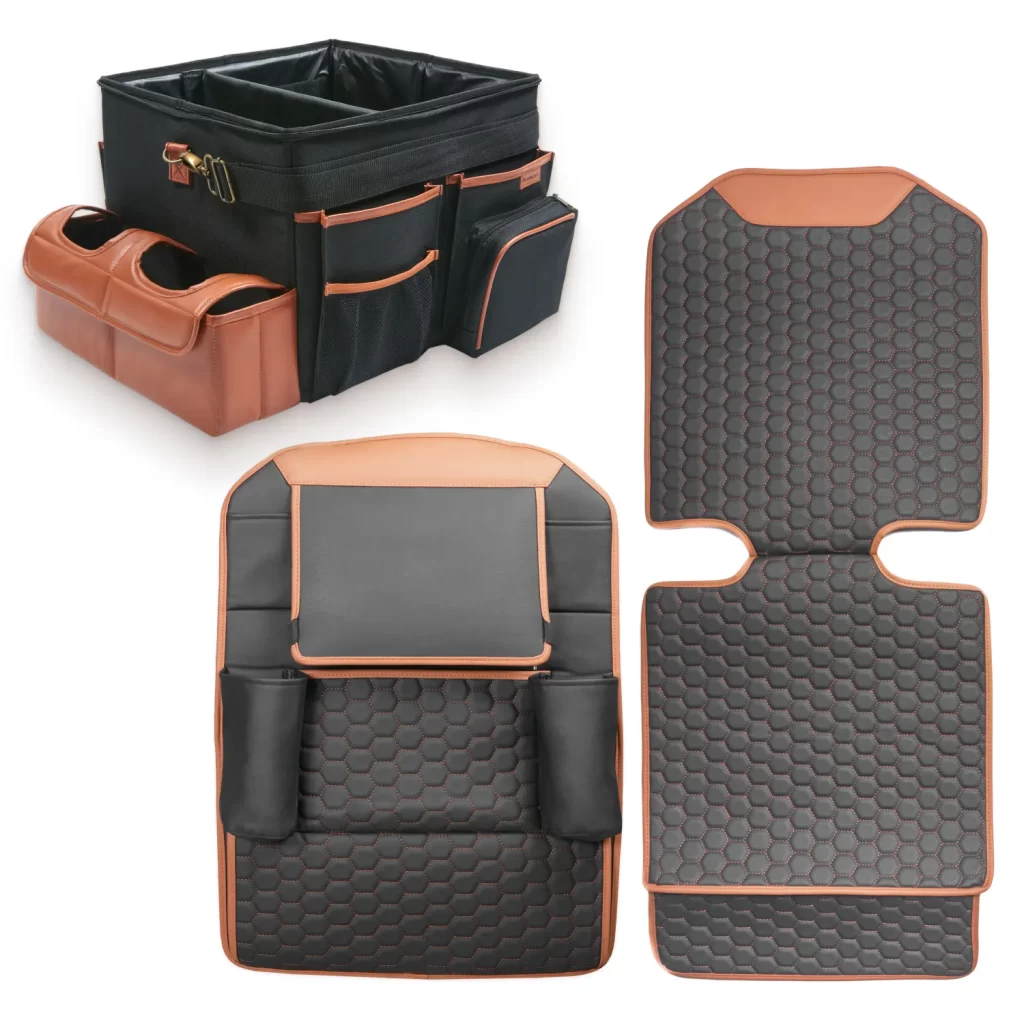
Owleys Backseat Storage Bundle — centralized snacks, books, wipes, and chargers reduce rummaging (and driver distraction), while keeping the floor clear for proper airflow.
Why it matters: That “new car smell” is VOC off-gassing; many perfumed products add more. Less is more for kids’ lungs.
What to do:
Why it matters: As engines get cleaner, a larger share of pollution comes from tires and brakes. Heavier vehicles and aggressive torque increase wear.
What helps:
| Enhancement | Typical Cost | Time to Implement | Eco/Health Impact | Family Factor |
|---|---|---|---|---|
| LRR tires | $$$ | Tire shop visit | Lower fuel use; less CO₂ | Quieter ride helps kids sleep |
| Proper tire pressure + alignment | $ | 10–30 min + annual alignment | 1–3% MPG gain; longer tire life | Better tracking with a full cabin |
| Remove roof box/racks when idle | $0 | 5–10 min | Double-digit MPG back on highway | Less wind roar for story time |
| HEPA/activated-carbon cabin filter | $$ | 10–20 min DIY | ~⅓ less PM; less NO₂/HC exposure | Cleaner air for kids & pets |
| Eco-coaching (apps / cruise discipline) | $–$$ | Immediate | 15–30% swing vs. aggressive driving | Smoother rides = fewer meltdowns |
| Anti-idling habit | $0 | Immediate | Fuel & pollution cut; legal compliance | Safer air near schools |
| Commercial car wash or low-impact DIY | $–$$ | 10–20 min | Less polluted runoff; less water use | Faster turnaround pre-trip |
| Owleys trunk/backseat organization | $$–$$$ | 10–30 min | Fewer projectiles; protect interior; less waste | Clean, calm cabin = focused driving |
| Low-VOC interior products | $–$$ | Ongoing | Lower VOC exposure | Fewer headaches / sensitivities |
| Tire & brake wear minimization | $$ | Maintenance cycle | Fewer non-exhaust particles | Longer intervals between service |
What upgrades really improve fuel efficiency?
Three that punch above their weight: tire pressure/alignment (up to ~3% MPG), removing roof cargo when not needed (double-digit highway savings), and smoothing out your speed/accel (avoid the 15–30% penalty from aggressive driving).
Are low-rolling-resistance tires worth it?
If you select a reputable model with proven wet grip, yes — expect modest MPG gains that add up over high mileage. A ~10% RR drop ≈ ~1% FE gain in passenger cars. Balance economy with safety.
Does idling less than a minute matter?
Yes. If you’re waiting longer than ~10 seconds, shut it off — you’ll burn less fuel than idling, per Argonne. Also note NYC’s three-minute citywide/one-minute school-zone rule for any engine; heavy-duty rules vary by state.
Do roof racks really kill MPG that much?
At speed, yes. They increase aerodynamic drag; national estimates peg the penalty at ~100 million gallons a year, with individual on-road penalties up to ~25% with certain boxes at highway speed. Remove them when not in use.
How do I make car cleaning more eco-friendly?
Use commercial washes that reclaim/filter water; if you wash at home, use phosphate-free soaps and pervious surfaces so runoff doesn’t head straight to storm drains.
Is cabin recirculation bad?
It’s useful in traffic to cut particulates — especially paired with a better filter — but toggle to fresh air periodically to manage CO₂ buildup and alertness.
Do organizers really affect safety or efficiency?
Indirectly, yes. Properly packed cargo avoids projectiles and keeps mass low and centralized; unsecured loads contribute to crash risk and roadway debris. AAA’s data is sobering. AAA Foundation for Traffic Safety
Eco-friendly isn’t a bumper sticker; it’s a system. A cleaner burn from the engine, fewer toxins in the cabin, and less chaos in the cargo area — all achieved by a handful of smart upgrades and habits you can install in an afternoon.
Drive cleaner. Breathe easier. And make that family road trip feel like the calm before the beach, not the storm after the snack break.
Subscribe to Owleys Adventure Club and find hidden deals of up to 30% OFF in our emails.
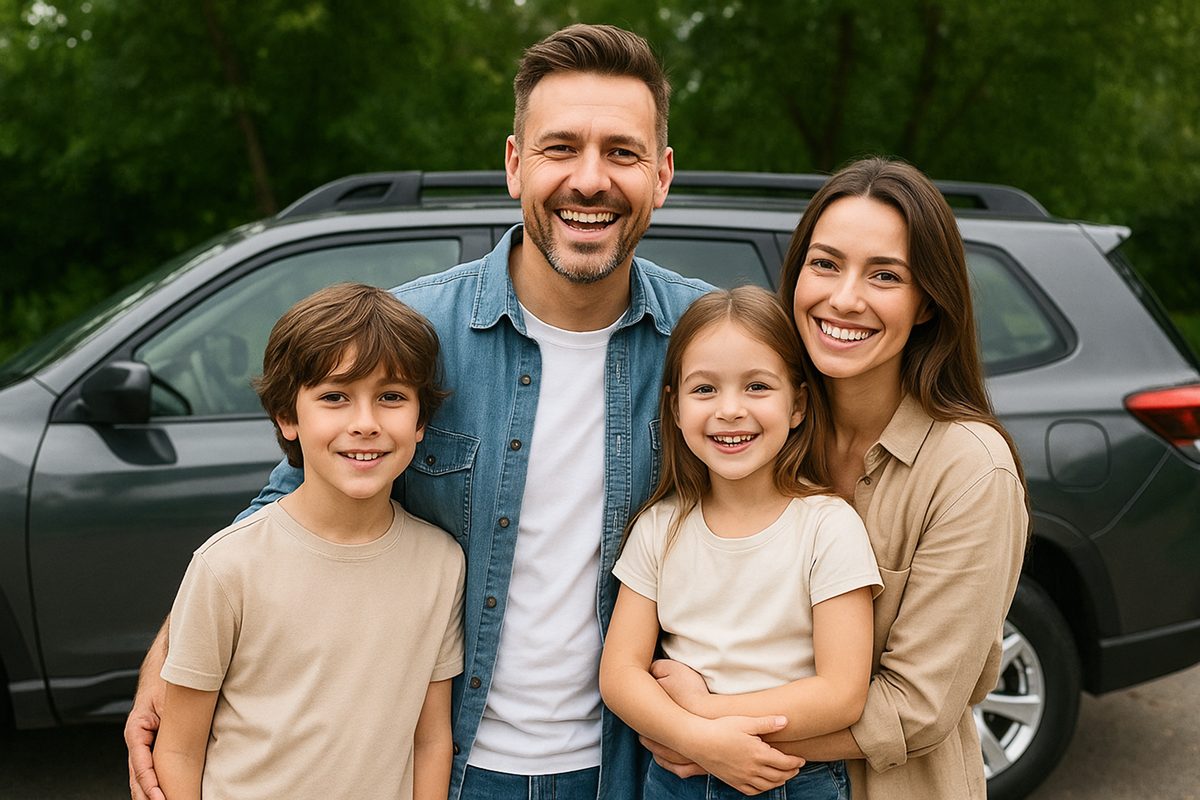
Choose the adventure that speaks to you and receive tailored recommendations from the Owleys Adventure Club.
Hooray! You're now on the Owleys Adventure Club list! ❄️ We’re so grateful for our customers and couldn’t be happier to have you in the club.
Check your inbox to find a personalized selection made just for you.Please ensure all fields are completed correctly.
error
Leave a comment